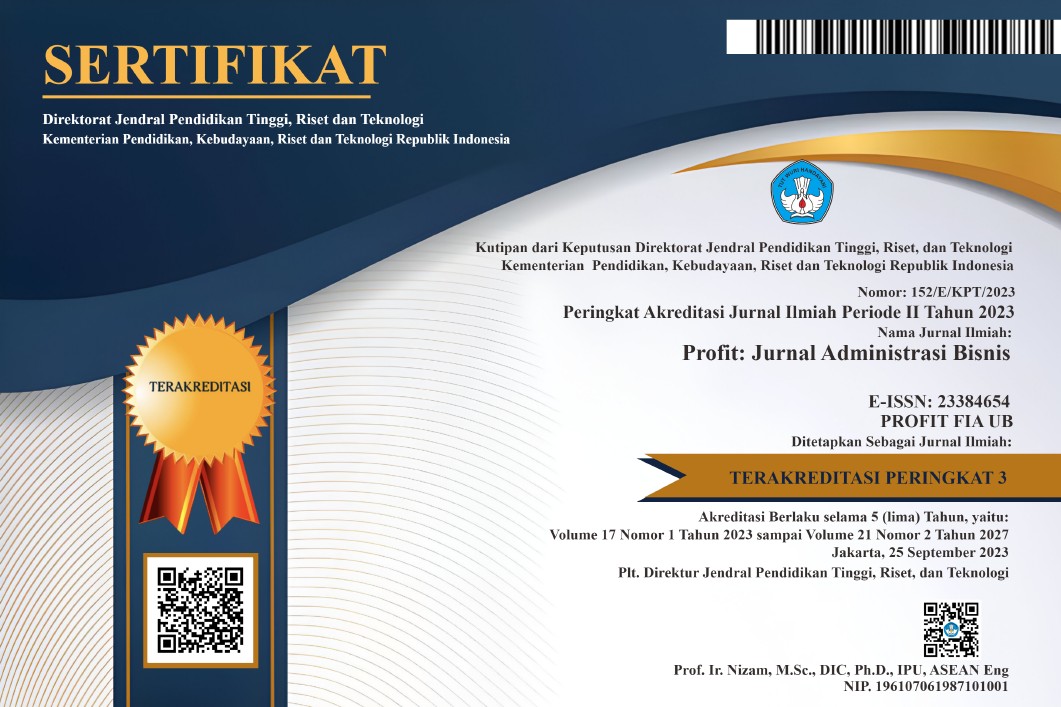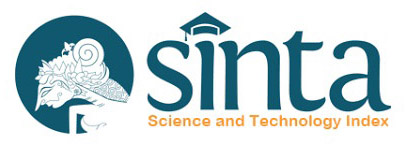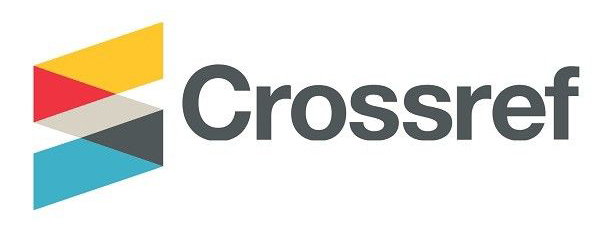ANALISIS PENGGUNAAN APLIKASI SISTEM INFORMASI LOGISTIK (SIL) UNTUK PERENCANAAN, PELAPORAN DAN PENGENDALIAN BERBASIS WEB DAN PENGARUHNYA TERHADAP KINERJA DAN KEPUASAN PENGGUNA (Studi pada : Pengguna Aplikasi SIL Perum Bulog Divisi Regional Jawa Timur)
DOI:
https://doi.org/10.21776/ub.profit.2016.010.02.2Keywords:
System Information Logistic, User Performance, User ExperienceAbstract
Use of computer technology properly and optimally utilized by the BULOG Public Company. Perum Bulog utilizing information and communication technology to provide information related to inventory logistics and other operational activities. This study aimed to analyze the use of SIL applications for planning (X1), the use of SIL applications for reporting (X2) use SIL applications for logistics control (X3) and its effect on performance (Y1) and User Experience (Y2). The study is an explanatory reseach with survey approach. The object of the study is an user SIL applications. This study took place in Perum Bulog East Java Regional Division A. Yani 146-148 Jalan Surabaya. The sample are of to 88 users. Instruments in this study using a questionnaire with data analysis method using path analysis. Tools or software used in statistical data processing research was SPSS 20. Â Based on the results of the study, data analysis, and discussion of the results of study and testing hypotheses 7 are performed, there are six hypotheses were significant accepted, and the first hypothesis is rejected. Accepted hypothesis H1 include the use of SIL applications for logistics planning has significant positive effect on user performance, H2 using a SIL applications for logistics planning significant positive effect on user satisfaction, H3 using a SIL applications for logistics reporting has significant positive effect on user performance, H4 using a SIL applications for logistics planning no significant effect on user satisfaction, H5 using a SIL applications for logistics control has significant positive effect on user performance, H6 using a SIL applications for logistics control has significant positive effect on user satisfaction and user performance H7 significant positive effect on user satisfaction.
Â
Â
References
DAFTAR PUSTAKA
Arikunto, S. 2010. Prosedur Penelitian : Suatu Pendekatan Praktik (Edisi Revisi), Jakarta. Rineka Cipta.
Davis, F.D, Bagozzi. R. P. & Warshaw. P. R. 1989. Pengguna acceptance of computer technology : a comparison of two theoretical models, Management Science, 35, 982-1003.
Elliyani, Redi Hamzah. 2009. Variabel Anteseden & konsekuensi Pemanfaatan SI. Jurnal Akuntansi dan Keuangan Indonesia. Vol-6 Nomor 1.
Eriyanto. 2007. Analisis Framing. Yogyakarta. LKIS Yogyakarta.
Ferdinand, A. T. 2006. Metode Penelitian Manajemen. BP Undip. Semarang
Guimaraes, T., D. S. Staples, dan J. D. Keen. (2003) Empirically Testing Some Main User Related Factor for Systems development Quality. Quality Management Journal. Vol 10, No. 4, pp. 39 – 54.
Herawati Evi. 2008. Penggunaan Aplikasi SI untuk Perencanaan Persediaan pada PT. SS. Jurusan Komputerisasi Akuntansi, Fakultas Ilmu Komputer, Universitas Bina Nusantara.
Igbaria M, 1997. An Examination of the factors contributing to Micro Computer techenology acceptance ? . Journal of Information system, Elsiever Science, USA.
Ilma dan Sukoharsono. 2011. Analisis Penggunaan Internet untuk Pelaporan Bisnis pada Perusahaan Tambang yang Terdaftar di BEI. Vol 2, No 2 - Jurnal Ilmiah Mahasiswa FEB - Brawijaya .
Jogianto, Sisem Informasi Keprilakuan, Penerbit Andi Yogyakarta, 2007.yang Terdesentralisasi Terhadap Kinerja Organisasi. Thesis Unpad.
Kuang Hou. 2012. Examining the effect of user satisfaction on system usage and individual performance with business intelligence systems: An empirical study of Taiwan’s electronics industr. International Journal of Information Management 32 (2012) 560–573.
Limbu. 2014. Does information and communication technology improve job satisfaction? The moderating role of sales technology orientation. Industrial Marketing Management.
Mardjiono, Didik Eko. 2009. Analisis Pengaruh Kepemimpinan, Pemanfaatan Teknologi Informasi dan Implementasi Sistem Organisasi
Md. Dulal Hossain, Junghoon Moon, Jae-woong Yun , Young Chan Cho, 2011. Impact of psychological traits on pengguna performance in information systems delivering customer service: IS management perspective. Decision Support Systems 54 (2012) 270–281.
Muntianah, Siti Tutik. 2012. Pengaruh Minat Perilaku terhadap Actual Use Teknologi Informasi dengan Pendekatan TAM. Thesis Program Pasca Sarjana Universitas Brawijaya Malang.
Nazir, Moh. 2003. Metode Penelitian, Salemba Empat. Jakarta 63.
Norzaidi, Salwani. 2009. Evaluating Technology Resistance and Technology Satisfaction on Studet Performance. Campus wide Information System 26 (4), 298-312.
Oswari. Teddy. E. Susi Suhendra dan Ati Harmoni. (2008). Model perilaku penerimaan Teknologi Informasi Terhadap Produktivitas dan Usaha Kecil. Seminar ilmiah nasional komputasi dan sistem Intelegen (KOMMIT 2008). Universitas Gunadarma. Depok.
Radityo dan Zulaikha, 2007. Pengujian Model Delone and Maclean dalam Mengembangkan SIM (Kajian sebuah Kasus) Simposium Nasional Akuntansi 10 (SNA 10) Unhas Makasar.
Riduwan dan kuncoro. 2011. Analisis Path. Bandung Alfabetha.
Ristianti dan Sukoharsono. 2012. Web-Based Enterprise Resource Planning (ERP) Systems Implementation Analysis at PT. Anugrah Jasa Caterindo. Jurnal Ilmiah mahasiswa FEB. Vol 2. Universitas Brawijaya.
Schaupps. (2009). A conjoint analysis of online customer satisfaction. Journal of electronic commerce research Vol 6 no.2 University of North Carolina Wilmington.
Simamora. Manajemen SDM, Sekolah Tinggi Ilmu Ekonomi YKPN, Yogyakarta. 2004.
Singarimbun, M. dan Effendi, S., (2006). Metode Penelitian Survai, Cetakan Kedelapanbelas, Penerbit Pustaka LP3ES, Jakarta.
Singarimbun, Masri. 1995. Metode Penelititan Survei. LP3S, Jakarta
Solimun, et al. 2008. Pemodelan Persamaan Pendekatan PLS dan SEM. Fakultas MIPA. Pascasarjana Unbraw.
Sugiyono. 2012. Metode Penelitian Pendidikan Pendekatan Kuantitatif, Kualitatif, dan R&D. Bandung: ALFABETA. 2012 (cet. 15)
Tempe, A.D. Seri Manajamen Sumber Daya Manusa : Kinerja, Elex Media Komputindo, Jakarta. 1992
Thompson Ronald, Howell, Higgins,.1991. Personal Computing : Toward a conceptual Model of Utilization ? Management Information System Quarterly, 21(3).
Wibowo. 2010. Analisis Perilaku Pengguna Teknologi Informasi pada Perguruan Tinggi Berstatus BHMN. FPEB. Universitas Pendidikan Indonesi
Downloads
Published
Issue
Section
License
The copyright of the received article shall be assigned to the journal as the publisher of the journal. The intended copyright includes the right to publish the article in various forms (including reprints). The journal maintains the publishing rights to the published articles.

This work is licensed under a
Creative Commons Attribution-NonCommercial 4.0 International License

















